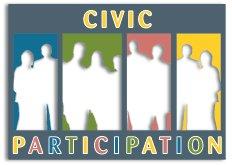The Importance of Civic Participation: Wrapping It Up
Terry Amsler is program director of the Institute for Local Government’s Collaborative Governance Initiative and can be reached at tamsler@ca-ilg.org. For more information about the Collaborative Governance Initiative, visit www.ca-ilg.org/cgi.
This month, Western City concludes its six-month series on civic participation. The relevance of public engagement to present-day problem solving was noted by Ventura City Manager Rick Cole in the series’ first article, “Involving the Public: How Local Officials See It.” He said, “There’s a difference between input and participation. Citizens can give input through public hearings and during comment periods — essentially opportunities to sound off with their opinions. But effective solutions emerge only when citizens participate in decision-making through workshops and other forums where they engage in listening, collaborating and weighing the trade-offs.”
Conversations with local officials throughout the state underscore the tremendous volume and range of public involvement activities under way in California’s cities and counties. Whether the issue to be addressed is land use, housing, climate change, budgeting or another important public issue, local agencies are increasingly seeking the public’s views, preferences and recommendations as part of the decision-making process.
Local officials are pursuing these efforts not only because they are collaborative and help build community, but also because building community and working together make the work of local governance more likely to be successfully completed. And experience suggests that well-engaged residents are also better informed about city and community issues and have greater trust and confidence in local decision-making.
The challenge now is not simply to have more civic engagement but to solicit and use the public’s ideas and knowledge in ways that are:
- Appropriate to the issue at hand;
- Inclusive of those who should have a voice; and
- Effective in their implementation and follow through.
It’s also important to consider how individuals and groups who are engaged in a public process will get the best and most relevant information they need to fully inform their deliberations.
A number of cities are also beginning to pay more attention to developing and sustaining public involvement capacity. They are setting citywide goals for informing and engaging residents, placing specific and ongoing responsibilities for this work with city staff and making more formal attempts to assess and learn from their experiences. Some are also helping to inform and develop new community leadership and supporting community-based mechanisms for ongoing collaboration with city officials. These steps represent important new possibilities that most communities are just beginning to explore.
With so much civic participation activity under way, local agencies can and should learn a great deal from each other’s experiences. This is especially relevant when local officials are confronting challenges similar to those faced by other communities or trying out innovative practices that bring the public into more deliberative local decision-making processes.
These are exciting times for anyone interested in civic participation. California’s communities and their public officials are leading the way to more collaborative and participatory governance. These efforts have great promise, and such practices will provide us with evidence of which approaches work best and under what conditions. The knowledge and skills to answer these questions will be an increasingly important part of what local officials need to know to effectively serve their communities.
This article appears in the December 2008 issue of
Western City
Did you like what you read here? Subscribe to Western City

